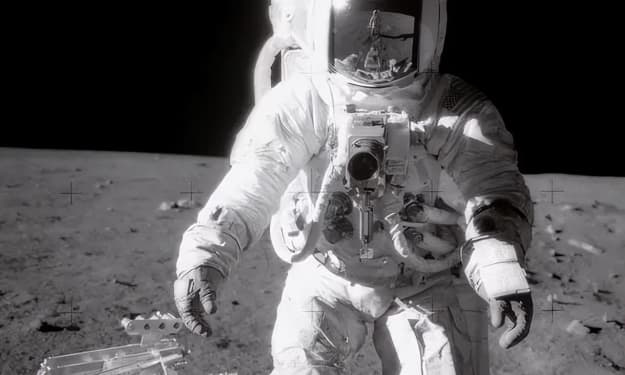Progress and Obstacles to Resurrecting Prehistoric Organisms
The latest developments in genetic engineering and cloning technology have led to the idea of "resurrecting" animals that were extinct in the past

Recent advances in genetic engineering and cloning have led to the idea of "resurrecting" animals that have been extinct in the past, but how far can we go? Hendrik Poyner, director of the Centre for Ancient DNA at McMaster University in Canada, and his research team succeeded this year in extracting the complete genome of the mammoth, an ancient animal that only appears in science fiction movies, for the first time, and published a report on it in the semiannual journal Current Biology. Poyner is excited to have access to the complete biological data of the long-extinct mammoth. He said, "Research has progressed rapidly in the last 10 years. I was involved in the first phase of this research as a student, and now I'm working on the second phase. I feel like I've become an old man in this field, even though I'm only 44 years old."
Reconstructing the genes of ancient creatures was initially a very limited research project, according to the September issue of the Spanish monthly magazine "Fun". Boyner admits, "At that time we thought we would never be able to access the complete genome of extinct creatures, and at best we would find fragmented pieces. But now everything has changed." The proof is the two complete genomes published in Current Biology. The first genome belongs to a mammoth that lived 4,300 years ago on Wrangel Island, now a Russian Arctic Ocean island. It is one of the last survivors of the mammoth population. The other gene belongs to a 44,800-year-old mammoth specimen. It was found almost intact in the permafrost of Siberia.
The latest genome sequencing technology, which can process large amounts of DNA data in a short period, has played an important role in the research process, the report said. Poyner said it has now entered the third phase of the project, which can use the genome to understand the evolutionary history of the mammoths that once reigned over the Earth but eventually became suddenly extinct.
Poyner is interested in the evolutionary history of the mammoth because the species once lived on Earth with humans, both of whom originated in Africa 6 million years ago. During their migration, mammoths occupied Central Asia, evolved subspecies in northern Siberia, and even reached Europe. At the same time, they crossed the Bering Strait continental bridge that connects Eurasia and North America.
In the process, mammoths evolved a variety of proboscideans that can be classified in the genus Mammoth. In addition to the true mammoth, another type of mammoth emerged in North and Central America that was large, but not as hairy as the true mammoth. This mammoth is called the Colombian mammoth. Poyner also analyzed the DNA of the Colombian mammoth. What genetic changes have occurred to make these mammoths, which originated in the dry and hot climate of Africa, adapt to the cold weather of other regions, even the polar regions, is one of the research topics of his team. And these regions have also experienced dramatic climate changes and glacial and interglacial periods. From glacial to interglacial periods, temperatures can reach from extremely cold to extremely hot.

Colombian mammoths were twice the size of real mammoths. They lived in the continental climate of the savannahs currently found in Mexico and the United States, while the true mammoths had adapted to the colder climate. The two became two very different species of proboscideans. However, Boyner said analysis of DNA inside the mitochondria of the samples revealed that the two mammoths had met at the same time and in the same place, as the cold forced the true mammoths to migrate south. After the two mammoths met, he said, the female true mammoths picked their mates among the male Colombian mammoths to breed. Past studies have shown that these are two very different mammoths that have not met in millions of years, but now research shows that they have interbred and thus remain genetically diverse.
The epitaph of the extinct species is also engraved on the genes, according to the report. What caused the extinction of a mammoth, a huge mammal with such a great capacity for adaptation? What caused the sudden extinction of 80 to 90 percent of mammoths in New Zealand, Australia, the United States, Asia, and Europe 11,000 years ago? Was it the weather or human? Or was it a combination of both?
The problem, says Boyner, is that both factors were at play at the time - the climate changed at the same time that humans set foot in these areas. Some believe humans are to blame, citing the presence of spears and other stone tools found on the fossils of these animals. Conversely, those who believe that climate change caused their extinction argue that one cannot conclude that Homo sapiens caused the extinction of mammoths based on a small number of discoveries.
What does DNA contribute to the debate? Poyner says it is possible to analyze the genetic diversity of mammoths when humans were not present in their environment. This approach lies in detecting the genetic diversity of a group of animals that lived in isolation on small islands or in Siberia and North America, especially if extreme climate changes were to occur. Proboscideans often form a hierarchical matrilineal group. The death of a female elephant can deal a heavy blow to a proboscidean colony. This is because it takes at least two years for a mother to produce a calf, in addition to about two to three years to raise the calf.
In populations of endangered species, individuals are often closely related to each other by family ties, and blood ties grow closer and closer. The lack of genetic diversity has accelerated the species' extinction. However, the genetic analysis conducted by Poyner and colleagues showed the opposite: mammoths had a high level of genetic diversity before extinction.
This clouds the mystery of the mammoth's extinction even more. The most likely scenario is that several mammoth populations located in different parts of the planet were threatened by extreme climatic conditions despite high levels of genetic diversity. Individuals from different populations interbred with each other, rather than marrying close relatives. Even so, the species suddenly became extinct. How is this possible? It is conceivable that an outside force must have intervened to cause this species to disappear from the planet. Homo sapiens not only use weapons but also have intelligent brains capable of planning mass murder. Poyner said that although climate change may have led to a decrease in volume, the last straw that crushed the mammoth should have been put up by humans.
According to the report, the use of the DNA of ancient creatures for evolutionary research is an interesting subject, but the most interesting to the public is the resurrection of extinct animals through genetic technology. Although this was only scientific speculation not long ago but has long been with the help of Michael Crichton's novel "Jurassic Park", as well as Hollywood director Steven Spielberg's film based on the novel deep into the hearts of the general public. In the movie, thanks to mosquitoes in amber that had sucked dinosaur blood more than 65 million years ago, dinosaurs were able to be cloned using the genes extracted from the blood.
Few people know that Crichton was inspired by a paper published in the 1980s by Hendrik Poyner's father, George Poyner, on how to extract DNA from insects in amber. But the famous paleontologist did not mention in his papers how to bring dinosaurs back to life. In his latest research using amber from Lebanon, Burma, and Canada, he shows us a Jurassic-era ecosystem. In this ecosystem, insects such as mosquitoes infected vertebrates such as dinosaurs with bacteria that could cause malaria, black fever, and intestinal disorders in the process of sucking blood. These diseases were enough to wipe out an entire population.
The idea of bringing extinct animals back from the dead was ingrained in Hendrik Poyner's mind. Through his unique position, Hendrik Poyner has seen the development of gene sequencing technology in recent decades. I grew up hearing stories about how DNA was extracted and cloned from insects sealed in amber," he says, "and I remember my father's conversations with Crichton. We both ended up as scientific advisors on Spielberg's films. I came close to playing a role in the film, but they eventually chose a professional actor."
Hendrik Poyner believes that the information read from among DNA has limitations. Jurassic Park is still science fiction and may never become reality for a variety of reasons. Mosquitoes could have sucked blood in soft places like around dinosaurs' eyes or nasal mucosa, and the undigested blood ended up in their stomachs. There is also the possibility that the red blood cells of dinosaurs had nuclei that contained genetic information. This is similar to the case of birds, which are related to dinosaurs. In contrast, the mature red blood cells of mammals do not have a nucleus. But what is unworkable is to extract DNA from blood left in the stomach of a mosquito, because so far there is no evidence that this blood does not degrade over millions of years. That's the problem. Even fossil proteins that do not contain genetic information cannot be preserved for more than a million years.
So there is a time limit to bringing an extinct animal back to life, and it can't be an animal that went extinct 65 million years ago. But Hendrik Poyner's genetic studies of mammoths over the last 10 years have doubly surprised those who hold skeptical views. He says, "We have essentially the full genome sequence of the mammoth, but it is not yet possible to detect its genome repeats." The average person would likely overlook these details, but some investors see this as an opportunity to make money. Several years ago there was a wealthy entrepreneur who wanted to pay Hendrik Poyner to build a prehistoric zoo. Although the offer was very tempting, but he still refused.
Hendrik Poyner said that if humans are to blame for the extinction of species, then it is their duty and responsibility to bring them back to life. He found that many students nowadays do not pay attention to issues such as fighting climate change, maintaining ecosystems, and recycling waste. Their fathers and mothers still drive large-emission cars that pollute the environment. He hopes to inspire the younger generation to be more passionate about protecting animals and preserving the ecosystem. As a young child, his parents often discussed issues related to extinct animals in front of him. They believed that the best ending should not just be to bring back extinct animals but to see them return to nature.
So what exactly was the reason that made Hendrik Poyner reject the original entrepreneur's proposal? He believes that scientists do not do research for money. If someone invests in you, then that person's aim should be to make money come from money, which is a mode of transaction. If bringing back an extinct animal just to create a zoo for people to see, then that is not what he ultimately wants to see. This is not restoring the ecosystem, it is creating a theme park.
About the Creator
Cindy Dory
When you think, act like a wise man; but when you speak, act like a common man.






Comments
There are no comments for this story
Be the first to respond and start the conversation.